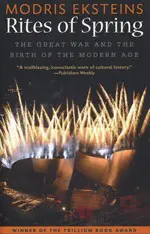In 701 B.C. the Assyrian empire was in its ascendancy. It had already vanquished the kingdom of Israel to the north including the capital at Samaria. It then prepared an assault on Judah and its capital at Jerusalem.
But in one of those significant events that changes the course of world history, Assyria was repelled. Jerusalem was saved until 586 B.C. when the Babylonians sacked the city, forcing its leadership class into exile.
Henry Aubin, in a major feat of scholarship, determines that Jerusalem was aided by a Kushite army from Africa which had marched northeast from the Nile valley. While the Bible attributes the Assyrian retreat to an angel and secular commentators cite pestilence, Aubin, in a meticulously documented work, demonstrates that an alliance with the African nation of Kush bolstered Jerusalem’s defences.
Kush, also known as Nubia, was located in what is now southern Egypt and northern Sudan. A monarchy that existed for more than 1000 years, from 900 B.C. to A.D. 350, Kushites held sway over Egypt from 712 B.C. to about 660 B.C. Of Egypt’s 31 dynasties, this, the 25th Dynasty, is the only one that all scholars agree, was black.
The commander of the Kushite expeditionary force was Taharqa (or as the Bible calls him Tirhakah). This Kushite prince, who had his own interests in halting Assyrian expansion, likely caught the aggressors by surprise as they prepared their siege of Jerusalem.
Aubin offers a thrilling military history and a stirring political analysis of the ancient world. He also sees the event as influential over the centuries.
The Kushite rescue of the Hebrew kingdom of Judah enabled the fragile, war-ravaged state to endure, to nurse itself back to economic and demographic health, and allowed the Hebrew religion, Yahwism, to evolve within the next several centuries into Judaism. Thus emerged the monotheistic trunk supporting Christianity and Islam.



“Eksteins is as gifted a stylist as he is a scholar. One reads it with fascination and intellectual gratitude.â€
Alfred Kazin
“…a witty and enterprising scholarâ€
Kurt Vonnegut
“…nothing less than a retrospective of our entire century. Art and politics, dance and war, have never been the same. …It is the start of a new history.â€
James Carroll
“This provocative and disturbing reappraisal of modernism rings with authority.â€
Publishers Weekly
Winner Trillium Award
Macmillan UK 2000 OP
Houghton Mifflin USA 1989
Knopf /Can 2012
Dogan Turkey 2014
Rowohlt Ger 1990/OP
Plon France 1990/OP
Misuzu Shobo Japan 2010
Editora Rocco Brazil
Standard Uitgeverij Holland
PIW Poland
Geulhangari Korea
Editorial Pre-Textos Spain
Social Sciences Academic Press China 2019
Argo Czech 2019
Rites of Spring
The Great War and the birth of the modern age
This classic, award-winning book, in print since 1989, is celebrated by scholars and readers alike. It even inspired a Hollywood film, Max, starring John Cusack.
“The Great War was the psychological turning point for modernism,†argues Eksteins. “The urge to create and the urge to destroy had changed places.â€
With originality and discerning historical analysis, he describes the origins, impact, and aftermath of WWI from the premiere of Stravinsky’s ballet The Rite of Spring in 1913, to the final dance by the denizens of Hitler’s bunker in 1945.
This is a remarkable cultural history that redefines the way we look at our past and think about the future.